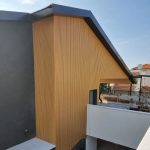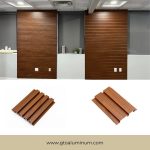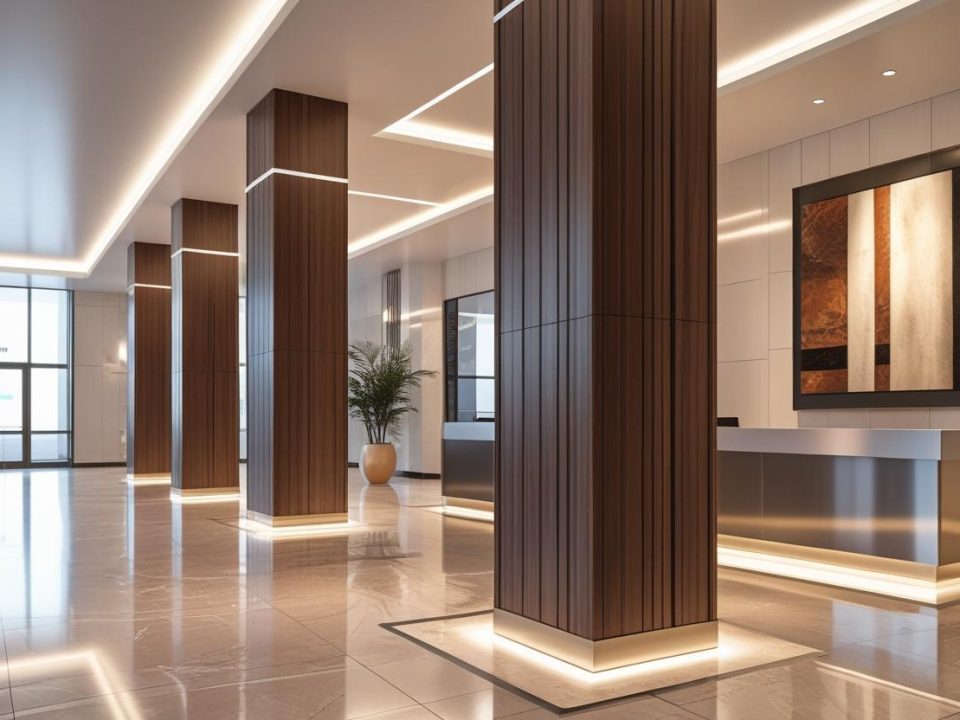
GTO Aluminum Panels: A Smarter, Stronger Alternative to Aluminum Composite Panels

Aluminum Composite Material Cladding vs 100% Aluminum Cladding – Choose Wisely
Every renovation project working through house remodels or commercial design or building construction will encounter cladding as an essential component. The significant importance of claddings requires detailed understanding about their definitions, so what are claddings?
The guide explains all essential information related to cladding systems. This piece will examine our cladding aluminum products at an industry-leading level through explaining materials alongside their usage types and the added benefits including fire resistance and other features.
Let us get started.
What Is a Cladding?
Cladding is a protective and decorative layer applied to the exterior (and sometimes interior) of a building. It serves multiple purposes: it protects the structure from weather, improves appearance, adds insulation, and even increases fire resistance in certain materials.
In simple words, cladding is like the skin of a building—it keeps the inside safe while giving the outside a polished look.
Why Is Cladding Important?
- Weather Protection: Prevents water, wind, and UV damage.
- Fire Resistance: Certain materials provide a barrier against fire.
- Aesthetic Appeal: Gives buildings a clean, stylish finish.
- Noise Reduction: Helps block out external sounds.

Black aluminum cladding installed outside a house to remodel the exterior.
Now that we know why cladding matters, let us talk about the materials used—because not all cladding is created equal.
Types of Cladding Materials
There are many types of cladding materials, each with its own strengths and weaknesses. Let us explore the most common ones:
1. Wood Cladding
Natural and beautiful, but requires regular maintenance. Not ideal in high-moisture or fire-prone areas.
2. Vinyl Cladding
Affordable and easy to install. However, it is less durable and not very fire-resistant.
3. Stone Cladding
Elegant and timeless. Heavy, expensive, and installation can be slow.
4. Fiber Cement Cladding
A mix of cement and fibers—resistant to fire and insects. But it is heavier and more brittle over time.
5. Metal Cladding
Includes steel, zinc, copper, and of course, aluminium. Metal cladding is durable, fire-resistant, and stylish.

A side-by-side showcase of the most common cladding types—wood cladding, vinyl cladding, stone cladding, fiber cement cladding, and metal cladding. Each material offers a unique look and comes with its own benefits and limitations.
Spotlight: Wood-like Aluminium Cladding




These wood-like Aluminium panels are becoming a favorite for architects and contractors alike. Here is why:
- Lightweight yet strong: Easier to transport and install without compromising strength.
- Corrosion-resistant: Perfect for coastal and urban environments.
- Modern look: Sleek, clean lines that fit both commercial and residential designs.
- Low maintenance: No rust, no repainting, no headaches.
- Fire-resistant: Especially our 100% aluminium panels—not composite, not mixed, just pure safety.
And now, let us make things clearer with a comparison.
Aluminium Cladding vs Other Materials
| Feature | Wood | Vinyl | Stone | Fiber Cement | Aluminium |
| Fire Resistance | Low | Low | High | High | High |
| Weight | Medium | Low | HIgh | High | Low |
| Maintenance | High | Low | Medium | Medium | Low |
| Appearance | Natural | Basic | Elegant | Plain | Modern & Stylish |
| Sustainability | Medium | Low | Low | Medium | HIgh |
| Installation | Moderate | Easy | Hard | Moderate | Very Easy |
As the table shows, aluminium cladding checks all the boxes—and then some.
Types of Aluminium Cladding Systems
There are a few different types of aluminium cladding systems, and each offers its own unique design possibilities:
1. Aluminium Composite Panels (ACP)
These are made of thin aluminium sheets with a plastic (polyethylene) core. They are lightweight and affordable, but they lack full fire resistance due to the inner plastic layer.

2. Solid Aluminium Panels
Made from 100% aluminium with no fillers or plastics. Stronger, safer, and more durable—perfect for long-term use in both interiors and exteriors.

3. Extruded Aluminium Cladding
Advanced and precise, this method shapes the panel using custom molds. It allows for sleek textures, wood-like finishes, and lightweight hollow-core designs.

At our company, we use extrusion technology to craft lightweight, fire-safe, fully aluminium panels with stunning finishes.
Our Unique Approach to Aluminium Cladding
We are proud to offer a next-generation cladding system that blends safety, performance, and design.
Here is what makes our panels stand out:
- No plastic core – just one solid piece of aluminium.
- Click installation – easy, fast, and clean without screws.
- Lightweight design – less load on buildings, easier handling.
- Wood-like textures – get the look of wood with none of the problems.
- Indoor & outdoor use – one solution for all spaces.
- Fire-safe – approved and tested under strict standards.
- Sustainable – recyclable and eco-conscious.
Where Can Aluminium Cladding Be Used?
Thanks to its versatility, cladding aluminum can be used in many areas:
- Building facades
- Commercial lobbies
- Residential balconies
- Hotel ceilings and walls
- Privacy fences
- Decorative panels
- Office interiors
Whether you want a clean modern look or a warm wood-tone finish, aluminium cladding fits the style.
Design & Installation Tips
- Plan Ahead: Think about both form and function. Do you want a bold statement or a subtle background?
- Choose the Right Type: If safety and lifespan matter, go for 100% aluminium—not ACP.
- Work With Experts: Our team helps from design to installation with smooth and professional support.
- Go Sustainable: Choose materials that are kind to the environment—and your future budget.
Choose the Cladding That Lasts
So, what are claddings? They are more than just decorative layers. They are your building’s first line of defense, an extension of your design, and a big part of long-term value.
With so many types of cladding out there, 100% aluminium cladding stands tall as the best all-around option. It is lightweight, strong, stylish, and most importantly—safe.
Aluminium cladding will give your project both a beautiful appearance that will survive multiple generations.
Contact our team now to explore our services and view our actual project work. Your next project benefits from our assistance to achieve beautiful, sturdy and safe solutions.
FAQs.
1. What is the difference between ACP and solid aluminium cladding?
ACP has a plastic core between two aluminium sheets. Solid aluminium cladding is 100% metal, which makes it safer and longer lasting.
2. Can I use aluminium cladding indoors?
Absolutely! Our panels are great for both interior and exterior use, also for ceilings to feature walls.
3. Is aluminium cladding easy to install?
Yes. Our panels use a fast click-lock system that makes installation smooth, quick, and clean—no mess, no stress.





